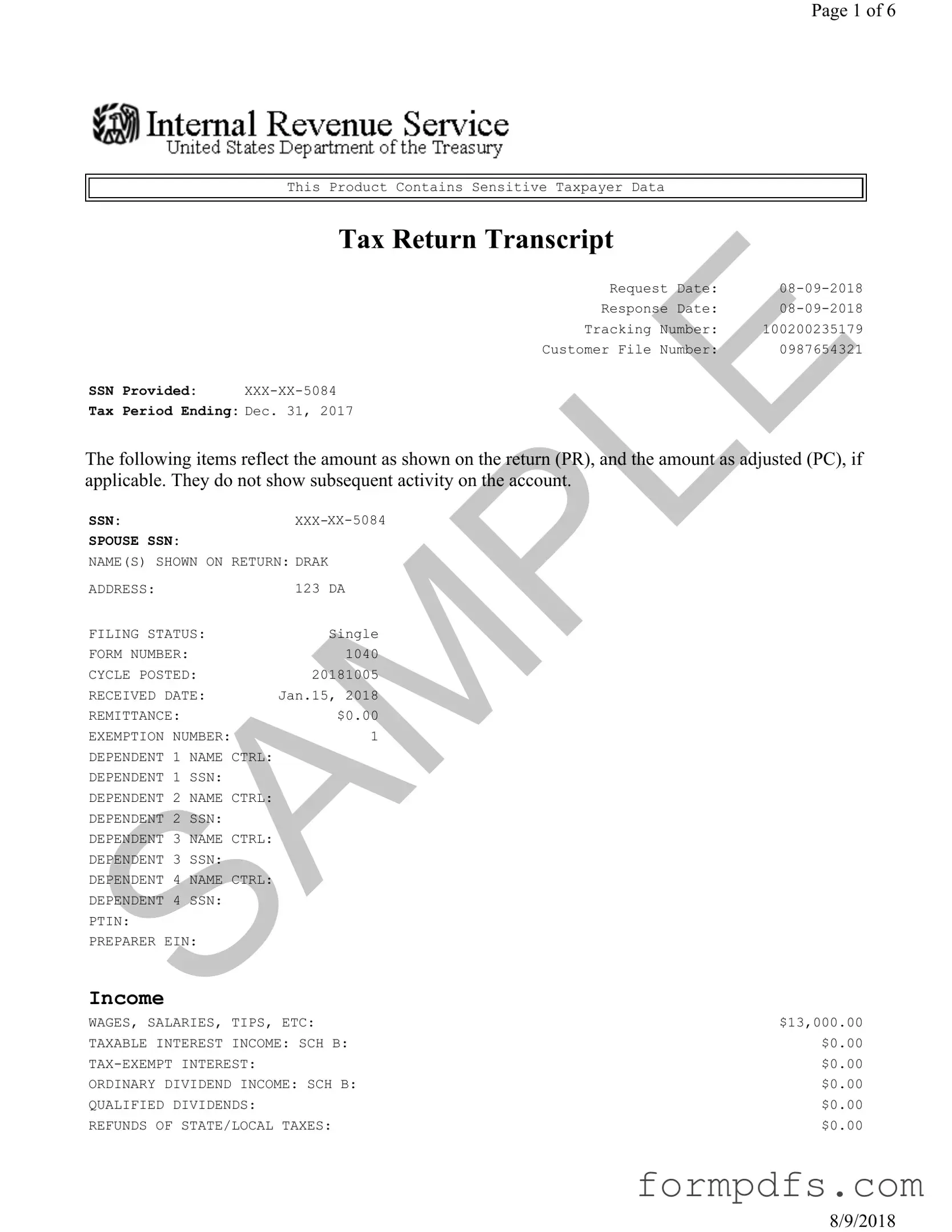What is a Tax Return Transcript?
A Tax Return Transcript is a document provided by the IRS that summarizes your tax return information. It includes most line items from your original tax return, such as income, deductions, and credits. This transcript is useful for verifying income when applying for loans or financial aid, as it provides a clear overview of your tax situation without revealing sensitive details.
How can I obtain a Tax Return Transcript?
You can request a Tax Return Transcript through the IRS website, by mail, or by phone. To order online, visit the IRS website and use the "Get Transcript" tool. You will need to verify your identity by providing personal information, such as your Social Security number and filing status. If you prefer to request it by mail, you can fill out Form 4506-T and send it to the IRS. Alternatively, you can call the IRS directly to request a transcript, but be prepared for potential wait times.
What information is included in a Tax Return Transcript?
A Tax Return Transcript includes your name, Social Security number, filing status, and the income reported on your tax return. It also details adjustments made by the IRS after your return was filed, if applicable. However, it does not include any information about your tax payments or refund amounts. For a complete view of your tax situation, you may need to request additional documents.
How long does it take to receive a Tax Return Transcript?
The time it takes to receive a Tax Return Transcript can vary. If you request it online, you may receive it immediately. Requests made by mail typically take 5 to 10 business days to process and send. If you call the IRS, they can provide an estimated timeline based on current processing times. It's advisable to plan ahead, especially if you need the transcript for a time-sensitive matter.
